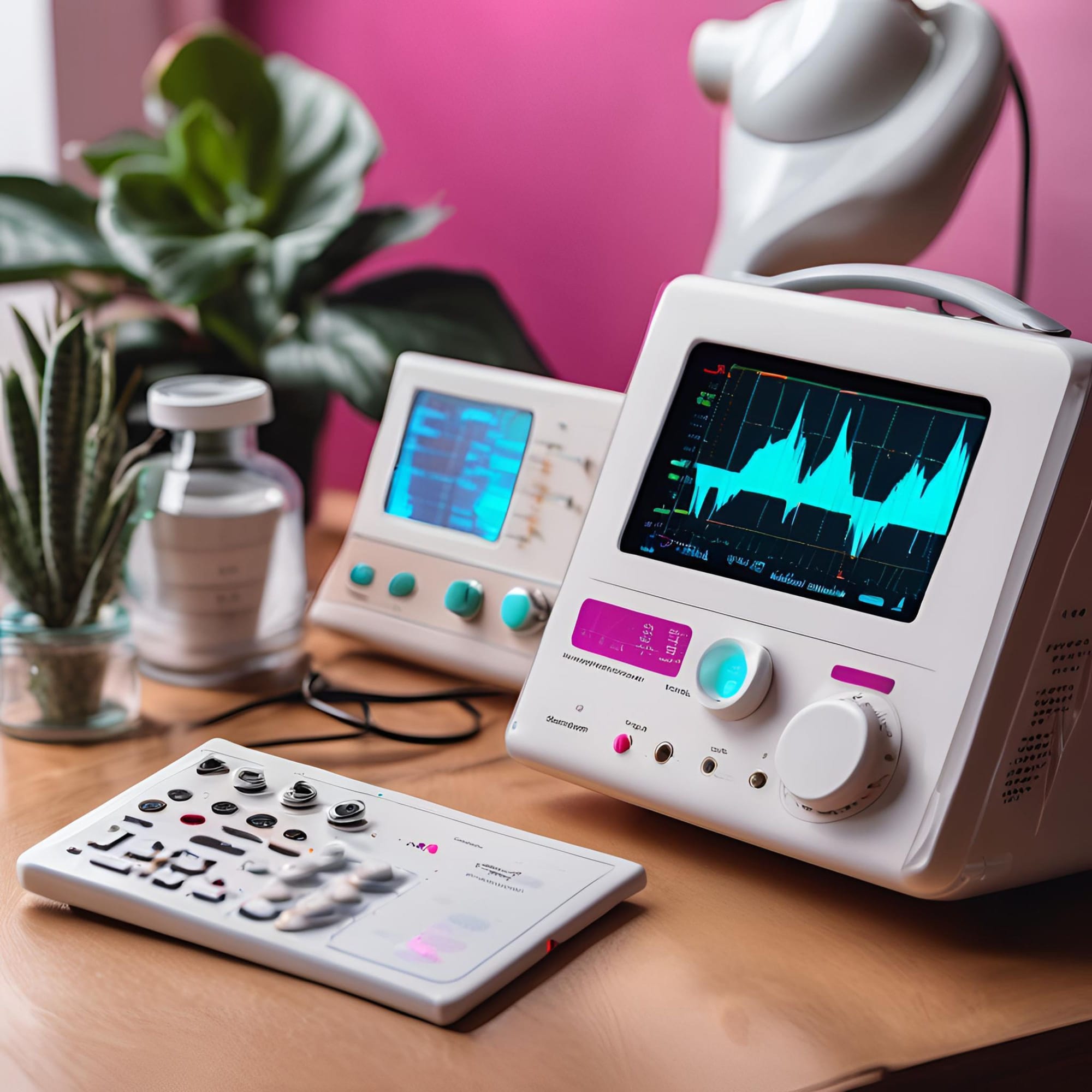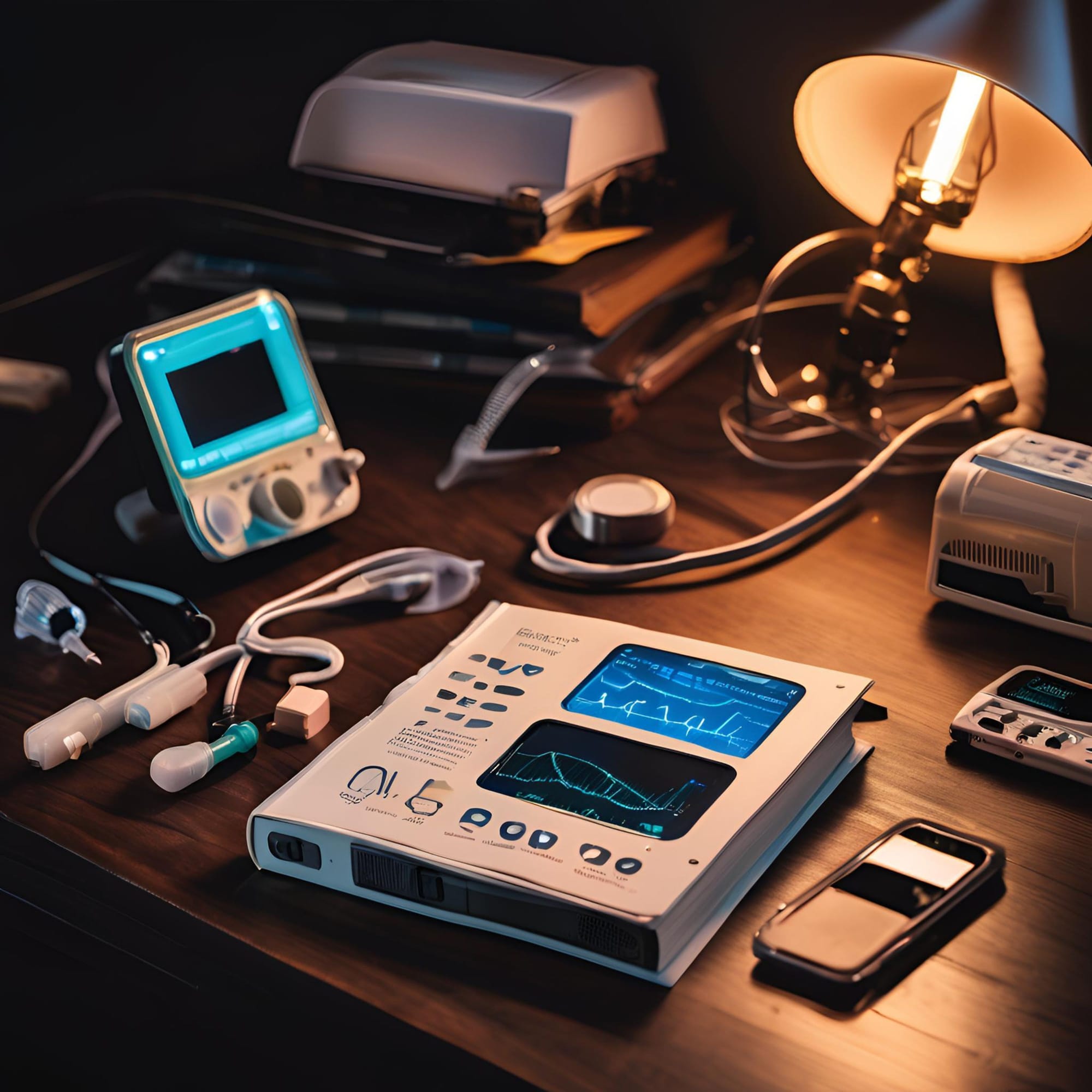Launching Your Home Medical Monitoring Business: A Comprehensive DIY Guide with Insights on Partnering with Major Companies










buymeacoffee.com coming soon..
Introduction
In an era where technology seamlessly integrates with everyday life, the healthcare sector is experiencing a significant transformation. One of the most promising developments in recent years is the advent of home medical monitoring. This innovative approach allows individuals to manage their health proactively from the comfort of their homes, reducing the need for frequent hospital visits and enabling real-time health tracking.
Home medical monitoring encompasses a range of devices and systems designed to monitor various health parameters, such as blood pressure, glucose levels, heart rate, and more. These devices not only empower patients to take control of their health but also provide healthcare professionals with critical data to make informed decisions.
For entrepreneurs and businesses, the home medical monitoring market presents a lucrative opportunity. The demand for remote health monitoring solutions has surged, driven by an aging population, an increase in chronic diseases, and a growing emphasis on preventive healthcare. Establishing a home medical monitoring business can be both financially rewarding and fulfilling, as it contributes to the well-being of communities.
This guide aims to provide a comprehensive overview of how to set up a successful home medical monitoring business. From understanding the fundamentals of home medical monitoring to partnering with major companies in the industry, this guide will walk you through each crucial step. Whether you are a seasoned entrepreneur or a newcomer to the healthcare sector, this guide will equip you with the knowledge and tools needed to navigate this burgeoning market.
In the following sections, we will delve into the specifics of home medical monitoring, explore the steps to establish your business, and discuss how to forge partnerships with leading home monitoring companies. By the end of this guide, you will have a clear roadmap to launch and grow your home medical monitoring venture, positioning yourself at the forefront of a rapidly evolving industry.
Understanding Home Medical Monitoring
Home medical monitoring has become an integral part of modern healthcare, leveraging technology to provide continuous, real-time health data from the comfort of one’s home. This section delves into what home medical monitoring entails, its benefits, and the types of devices commonly used.
What is Home Medical Monitoring?
Home medical monitoring refers to the use of electronic devices to track and record health-related data outside traditional clinical settings. These devices can measure vital signs such as blood pressure, glucose levels, heart rate, and oxygen saturation, and then transmit this information to healthcare providers for analysis. The goal is to provide patients with more control over their health, enable early detection of potential health issues, and facilitate timely medical intervention.
Benefits of Home Medical Monitoring
The advantages of home medical monitoring are multifaceted, benefiting both patients and healthcare providers:
- Convenience and Comfort: Patients can monitor their health without frequent visits to the hospital or clinic, reducing travel time and discomfort.
- Continuous Monitoring: Unlike periodic check-ups, home medical monitoring offers continuous data collection, providing a more comprehensive view of a patient’s health.
- Early Detection: Continuous monitoring can identify subtle changes in health status, enabling early detection and treatment of potential issues.
- Cost-Effective: Reducing the need for in-person consultations and hospital stays can significantly lower healthcare costs for both patients and providers.
- Patient Engagement: By actively participating in their health monitoring, patients are often more engaged and compliant with their treatment plans.
Types of Home Medical Monitoring Devices
Various devices cater to different monitoring needs, each designed to provide accurate and reliable health data. Here are some common types:
- Blood Pressure Monitors: These devices measure the force of blood against the walls of arteries, helping manage conditions like hypertension.
- Glucometers: Essential for diabetic patients, glucometers measure blood glucose levels, allowing for effective diabetes management.
- Pulse Oximeters: These devices measure oxygen saturation in the blood, crucial for patients with respiratory conditions.
- Heart Rate Monitors: Often integrated into wearable devices, these monitors track heart rate to manage cardiovascular health.
- Wearable Fitness Trackers: Beyond fitness, these devices can monitor a range of health metrics like sleep patterns, activity levels, and more.
- Smart Scales: These scales do more than just measure weight; they can also provide data on body composition, including fat percentage and BMI.
By understanding the scope and benefits of home medical monitoring, individuals and businesses can better appreciate its potential impact on healthcare. In the next section, we will explore how to set up a home medical monitoring business, covering everything from market research to regulatory requirements.
Setting Up a Home Medical Monitoring Business
Setting up a home medical monitoring business can be a rewarding venture, given the rising demand for healthcare solutions that offer convenience and peace of mind. Here's a step-by-step guide to help you navigate through the essential components of establishing your business.
Market Research and Analysis
Before diving into the business, it's crucial to conduct comprehensive market research. This involves understanding the current market landscape, identifying key players, and recognizing potential gaps that your business could fill.
- Identify Target Demographics: Determine who your primary customers will be. Are you targeting elderly individuals, patients with chronic illnesses, or general health-conscious individuals? Understanding your target demographic will help tailor your marketing and product offerings.
- Competitive Analysis: Examine existing home medical monitoring companies. Analyze their strengths, weaknesses, customer reviews, and market positioning. This will help you identify what works and what doesn’t, allowing you to carve out a unique value proposition for your business.
- Trend Analysis: Stay updated on the latest trends in healthcare technology. Innovations in telemedicine, wearable technology, and data analytics can offer new opportunities for your business.
Business Plan Development
A well-structured business plan serves as a roadmap for your venture. It outlines your business objectives, strategies, and financial projections.
- Executive Summary: Provide a concise overview of your business idea, mission statement, and the specific problems your service aims to solve.
- Product and Service Offerings: Detail the types of home medical monitoring devices you plan to offer. Will you focus on wearable devices, remote monitoring systems, or a combination of various technologies?
- Marketing Strategy: Develop a comprehensive marketing plan that includes digital marketing, partnerships with healthcare providers, and community outreach programs. Clearly define how you will attract and retain customers.
- Financial Projections: Prepare detailed financial forecasts, including startup costs, operating expenses, revenue streams, and break-even analysis. This will not only guide your financial planning but also be crucial if you seek funding from investors.
Regulatory and Compliance Requirements
Compliance with regulatory standards is non-negotiable in the healthcare industry. Ensuring that your business adheres to all relevant laws and guidelines will protect you from legal issues and build trust with your customers.
- FDA Regulations: Depending on the type of devices you plan to offer, you may need to comply with FDA regulations. Ensure that your products are either FDA-approved or meet the necessary standards for medical devices.
- Data Privacy Laws: Given the sensitive nature of health data, compliance with data protection regulations such as HIPAA (Health Insurance Portability and Accountability Act) in the United States is critical. Implement robust data security measures to protect patient information.
- Local and State Regulations: Be aware of any additional local or state regulations that may apply to your business. This could include business licensing, zoning laws, and specific healthcare regulations.
- Insurance and Liability: Obtain the necessary insurance coverage to protect your business from potential liabilities. This might include general liability insurance, professional liability insurance, and cybersecurity insurance.
By meticulously planning and adhering to regulatory requirements, you can lay a solid foundation for your home medical monitoring business. With a clear understanding of the market, a robust business plan, and strict compliance with regulations, you are well on your way to launching a successful venture in the burgeoning field of home healthcare technology.
Partnering with Major Home Monitoring Companies
Partnering with established home monitoring companies can significantly enhance the success of your home medical monitoring business. This section will guide you through the critical steps in choosing the right partner, negotiating contracts and agreements, and integrating with existing systems.
Choosing the Right Partner
Selecting the appropriate partner is crucial as it directly impacts the quality of services you can offer and the overall growth of your business. Here are some key factors to consider:
- Reputation and Reliability: Investigate the reputation of potential partners by checking customer reviews, industry ratings, and testimonials. A reputable partner with a track record of reliability can add significant value to your business.
- Technology and Innovation: Evaluate the technological capabilities of the company. Ensure they offer cutting-edge, user-friendly devices and software that can integrate seamlessly with your system.
- Support and Training: Consider the level of support and training the company provides. A good partner should offer comprehensive training for your staff and ongoing technical support to address any issues that arise.
- Cost and Financial Stability: Analyze the cost structure and financial health of the potential partner. Ensure that their pricing aligns with your budget and that they are financially stable to support long-term collaboration.
- Compliance and Certifications: Ensure that the company complies with relevant regulatory standards and possesses necessary certifications. This ensures that their products and services are safe and meet industry standards.
Negotiating Contracts and Agreements
Once you have identified potential partners, the next step is to negotiate contracts and agreements. Here are some tips to ensure a favorable outcome:
- Clear Terms and Conditions: Ensure that the contract clearly outlines the roles, responsibilities, and expectations of both parties. This includes delivery timelines, service level agreements (SLAs), and performance metrics.
- Pricing and Payment Terms: Negotiate pricing structures and payment terms that are favorable to your business. Consider volume discounts, payment schedules, and any additional fees that may apply.
- Termination and Exit Clauses: Include termination and exit clauses in the contract. This will provide a clear process for ending the partnership if it becomes necessary, protecting both parties from potential disputes.
- Intellectual Property Rights: Clarify the ownership and use of intellectual property, including software, data, and proprietary technologies. Ensure that your business retains the necessary rights to use and modify these assets.
- Confidentiality and Data Security: Include clauses that address confidentiality and data security. This is particularly important in the medical field, where patient data must be protected in accordance with regulations such as HIPAA.
Integrating with Existing Systems
Successful integration with existing systems is essential for a seamless operation. Here are some steps to achieve this:
- Compatibility Assessment: Conduct a thorough assessment to ensure compatibility between your systems and those of your partner. This includes hardware, software, and data formats.
- Integration Plan: Develop a detailed integration plan that outlines the steps and timeline for integrating systems. This plan should involve key stakeholders from both companies to ensure a smooth process.
- Testing and Validation: Before full implementation, conduct extensive testing to identify and resolve any issues. This includes functional testing, performance testing, and security testing.
- Training and Support: Provide training for your staff to ensure they are comfortable with the new systems. Additionally, establish a support structure to address any technical issues that may arise post-integration.
- Continuous Improvement: After integration, continuously monitor the performance of the systems and seek feedback from users. Use this information to make ongoing improvements and enhancements.
By carefully selecting the right partner, negotiating favorable terms, and ensuring seamless integration, you can significantly enhance the capabilities and success of your home medical monitoring business.
Conclusion
Home medical monitoring is rapidly becoming an integral part of the healthcare landscape, offering significant benefits for both patients and healthcare providers. As we’ve explored in this guide, advancements in technology have made it possible to monitor various health parameters from the comfort of one's home, thereby enhancing patient care while reducing the burden on healthcare facilities.
Setting up a home medical monitoring business presents a lucrative opportunity for entrepreneurs who are willing to invest time and effort into market research, business planning, and ensuring compliance with regulatory requirements. By understanding the diverse range of monitoring devices available and their specific applications, business owners can tailor their offerings to meet the needs of their target market effectively.
Partnering with major home monitoring companies can provide a substantial advantage, offering access to established technologies, proven systems, and comprehensive support. Choosing the right partner, negotiating favorable terms, and integrating seamlessly with existing systems are critical steps that can determine the success of your business.
In conclusion, the home medical monitoring industry is poised for significant growth, driven by the increasing demand for remote healthcare solutions. Entrepreneurs who can navigate the complexities of this industry and form strategic partnerships will be well-positioned to capitalize on this expanding market. By focusing on delivering reliable and innovative monitoring solutions, your business can play a pivotal role in enhancing healthcare delivery and improving patient outcomes.






Member discussion